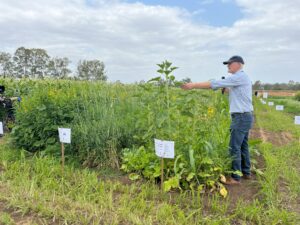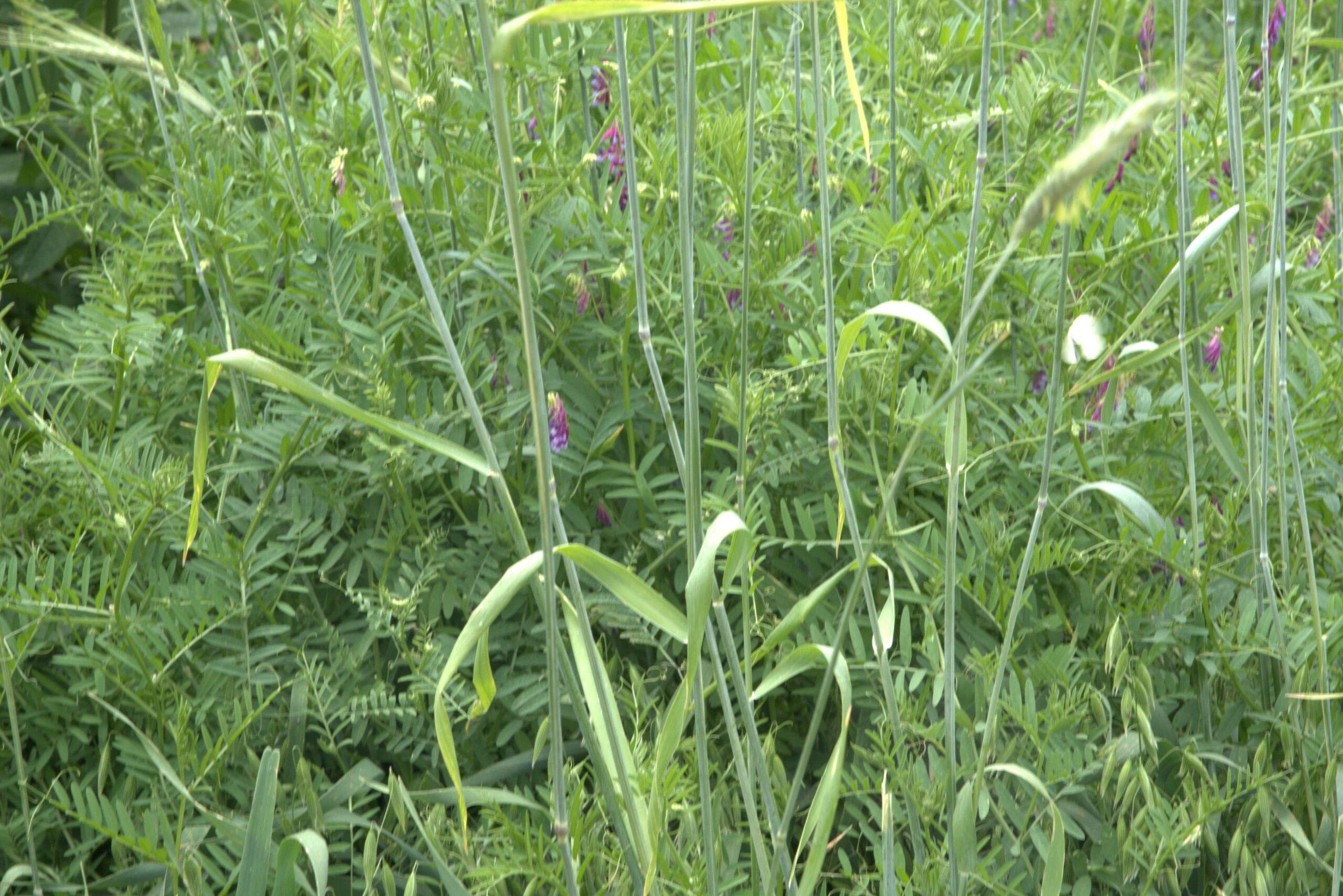Harnessing the power of cover crops for enhanced soil health
World Soil Day, celebrated on 5 December each year, brings to light the critical role that soil plays in our lives, from ensuring food security and regulating our climate to preserving biodiversity. As environmental challenges escalate, this annual event takes on even greater significance, serving as a timely reminder of the urgent need for responsible soil management practices to protect our planet and feed its people.
Cover crops, an essential component of sustainable agriculture, are able to do much of the heavy lifting in the quest to maintain and enhance soil health. They act as living shields, not only preserving soil and its essential functions, but also improving and rehabilitating degraded soils.
Cover crops at the Gatton showcase
At the recent Gatton AgTech showcase in Queensland’s Lockyer Valley, Dr Kelvin Montagu, Dr Doris Blaesing, and Steph Tabone showcased a Soil Wealth ICP cover crop trial, hosting two field walks under the theme Making the most of your cover crops.
The extensive cover crop trial was designed to facilitate in-depth conversations on various topics, including the contribution of legumes to nitrogen availability in the soil, different crop termination options to maximise cover crop benefits, and considerations for growing mixed species cover crops.
The trial site featured several combinations of cover crops, ensuring a diversity of species, functions and termination methods. Cover crops were selected based on their ability to demonstrate different termination methods and promote discussion among attendees.
Field walk conversations
With a cover crop available for all seasons, soils, water availability and end uses such as nitrogen fixing, biofumigant or erosion control, broad generalisations cannot be made. Some specific observations are listed in the Cover crop summary at Gatton showcase breakout box; however, ultimately, what you grow, how you manage it, when you plant it, when you terminate it and how you terminate it depends on your unique situation.
The diversity of crops and their management was the focus of the field walk. Participants were interested in the following:
- Principles of growing cover crops
- Challenges associated with specific species
- Strategies for planting and termination
- Cover crops as an alternative to plastic mulch
- Incorporating cover crops with strip tillage
- Building soil health
- Managing soilborne diseases
- Comparing mixed species to single species
- Understanding the role of cover crops in biosecurity and disease reduction.
Conversation often returned to a key theme: the dual role of cover crops in reducing the high costs of inputs and improving soil health.
Worthy of celebration
Cover crops offer a range of benefits to an agroecosystem, with a primary focus on improving soils. As invaluable contributors to sustainable agriculture and healthy soils, let’s also celebrate cover crops this World Soil Day.
Examples of Cover Crop mixes
Warm season legume mix (lablab, sunn hemp, cowpea):
- Adds nitrogen to the system (1 tonne of dry weight adds 25kg/ha of nitrogen).
- Terminate before maturity for quality biomass.
- Inoculate legume seeds with the correct strain of Rhizobia bacteria.
- Consider existing soil nitrogen levels.
- Termination methods affect nitrogen availability.
- Chopped and incorporated residue releases nitrogen quickly.
Cool season mix (cereal rye, oats, vetch):
- Cereals scavenge nitrogen, encouraging legume nitrogen fixation.
- Compatibility with vetch climbing cereals.
- Consider different termination methods.
- Rolling effective for termination of cereal rye.
Warm season mix (AGF Seeds Warm Cover mix – 11 species):
- Mixed species phase in and out as cover crop matures.
- Mixed species bringing biodiversity to the farming system.
- Not all species will establish.
- Challenges: potential weed problems and disease hosting.
- Complex weed management.
Buckwheat:
- Quick growth, attracts pollinators.
- Terminate before flowering to avoid seed set.
- Establishment was variable due to water availability at planting.
- Reinforces the importance of cover crop care.
Biofumigant (Caliente rojo):
- Controls soilborne diseases with glucosinolates.
- Terminate at 25% flowering.
- Mulching and incorporation release glucosinolates.
- Glucosinolates become toxic gases for pathogens.
- Can be grown year-round in the Lockyer Valley.
- Biomass varies with seasons and regions.
French millet (Warm season grass):
- Various types of millet with different performance.
- Suppresses weeds and aids broadleaf weed control.
- Useful for nutrient recovery.
- Heat-tolerant grass species
Find out more
For more information, please contact project leaders Dr Gordon Rogers on 02 8627 1040 or gordon@ahr.com.au and Dr Anne-Maree Boland on 03 9882 2670 or anne-mareeb@rmcg.com.au.

